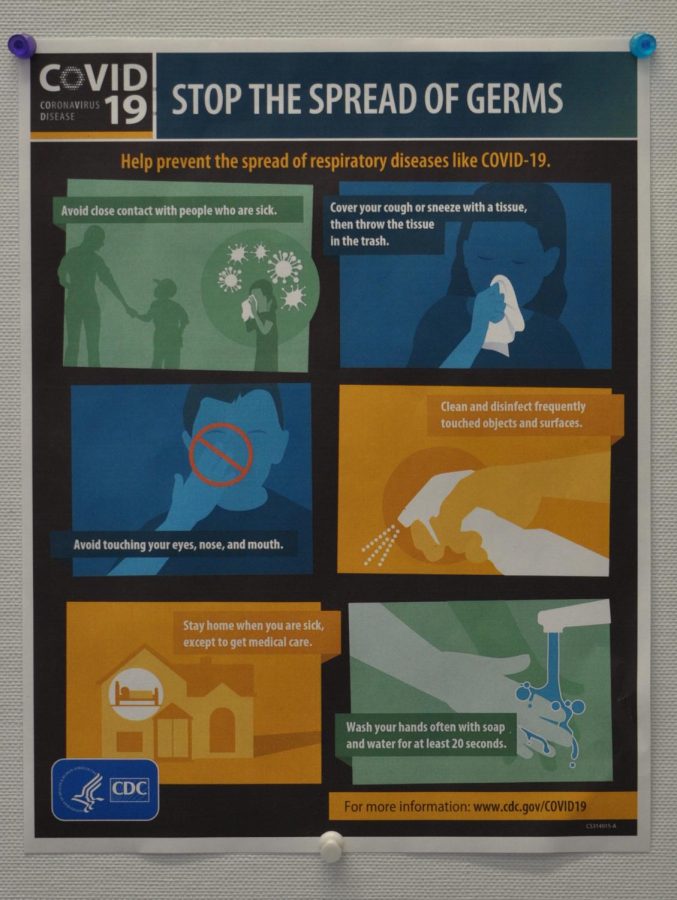COVID-19 pandemic timeline suggests ‘overtime’ virus ‘will become endemic’
March 7, 2022
Since COVID-19 first appeared over two years ago around Dec. 12, 2019, the resulting pandemic has altered many lives at Oregon State University, and the virus is likely
here to stay.
Dec. 12, 2019: The first cases of COVID-19 were reported in Wuhan, Hubei Providence, China, according to the Centers for Disease Control and Prevention. These cases of pneumonia of unknown causes are all connected to the Huanan Seafood Wholesale Market in Wuhan, according to the CDC.
Jan. 20, 2020: The CDC reports the first laboratory-confirmed case of COVID-19 in the United States from samples collected two days earlier in Washington state. It is likely the virus was circulating in the U.S. before the first case was identified.
Feb. 28, 2020: According to the Oregon Health Authority, the first case of COVID-19 in Oregon was identified from an adult resident of Washington County, who started feeling sick nine days earlier. Again, it is likely that COVID-19 was already circulating in Oregon before this point.
March 9, 2020: The first cases of COVID-19 are identified in Benton County. Again, it is likely that the virus was circulating before COVID-19 cases were identified in
Benton County.
March 12, 2020: OSU announces that all finals, if possible, will be administered online for the winter term of 2020.
March 30, 2020: OSU extends its spring break by one week, and allows freshmen to move out of the dorms if they desire over spring break. Classes go online for spring term “where possible.” Students don’t yet know that classes will be online through summer term of 2021, over a full academic year.
“I was a senior at Tulane University in New Orleans,” said Katie Mannina, a masters student in public health at OSU. “I think it was March 11, 2020 that the university decided to add a week onto spring break. I went home and was there until June 2020, and I graduated during the pandemic.”
Around this time, the COVID-19 pandemic shut down not only large venues, but also schools, restaurants and small businesses.
March 27, 2020: The Coronavirus Aid, Relief, and Economic Security act is signed into law, sending stimulus checks to most Americans and funding to universities, such as OSU, that was then given to students and staff.
July 1, 2020: Oregon begins its statewide mask mandate. Previously, masks were limited to only a small number of counties, but in an effort to slow the spread of the illness, Governor Kate Brown instituted the statewide mask mandate. For many, things have normalized and masks are now accepted as an item required to enter most businesses.
“Right when stuff started shutting down, I had plans to go visit family on Oahu, Hawai’i for spring break,” said Eli Winkleman, a mathematics major at OSU. “Because the shutdown happened, I ended up staying there for all of spring term… I stayed in Oregon for the next year basically, and then now I’ve come back to Hawai’i just in the past few months… For the first year of the pandemic, I did almost nothing with anyone.”
June 2021: During this month, the delta variant became the dominant variant in the U.S. This variant was unique because it was more infectious and deadly than previous COVID-19 variants.
Aug. 25, 2021: OSU announces that most classes will be held in person for fall of 2021, with masks worn and distancing restrictions in place.
Dec. 1, 2021: The first case of the omicron variant of COVID-19 was identified in the U.S. This strain is significant because it was more infectious than previous strains, but also less deadly, resulting in less hospitalizations.
March 2022: By March 12, Oregon will lift its indoor mask mandate. March also marks two years since the COVID-19 pandemic started shutting down businesses and schools, including OSU, in Oregon and Benton County.
To date, over 434 million cases of COVID-19 have been recorded worldwide—although the actual number is likely much higher—and at least 5.94 million people have died from COVID-19. The COVID-19 pandemic has also impacted mental health and caused isolation and quarantines.
While the COVID-19 pandemic should decrease in severity, Dan Larson, the OSU vice provost for student affairs and OSU coronavirus response coordinator, said COVID-19 is likely something that will continue to affect the OSU and Corvallis communities.
“I do not see any indication from health authorities suggesting that COVID-19 is not here to stay, and likely over time will become endemic,” Larson said. “I am hopeful, as I think we all are, that the public health measures and tools that are in place—vaccines and treatments—will reduce negative health impacts in the future.”
Governor Kate Brown announced on Feb. 28 that indoor mask requirements will be lifted on March 12. OSU will also lift its indoor mask mandate on that same day.
















































































































